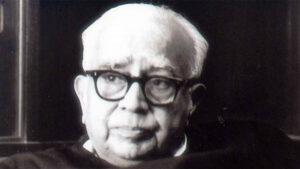
Among the echoes of political speeches and the clamour of rallies during India’s turbulent years of independence, a formidable weapon silently emerged from the shadows – the satirical cartoon. While revolutionaries and leaders fought on the front lines, cartoonists armed themselves with ink and wit, using their illustrations to expose the British Raj’s follies and hypocrisies. These artists became unsung heroes in the world of political commentary, employing their pens to pierce the curtain of power and give voice to the masses’ frustrations.

The satirical cartoon was a dangerous foe to the British rulers, with the ability to make people laugh, think, and mobilize public opinion. Cartoonists like R.K. Laxman and Shankar Pillai became harbingers of dissent with their deft strokes, effectively reducing complex political topics into visual narratives that could be grasped by everybody.
These cartoonists used humour to expose the colonial administration’s contradictions and absurdities. They portrayed British officials as pretentious creatures with top hats and pith helmets, frequently accompanied by a clumsy sidekick who embodied Raj’s inefficiency and arrogance. The cartoonists communicated a striking message with their exaggerated features and hilarious portrayals: that the rulers were not invincible, but rather regular mortals worthy of investigation.
The brilliance of satire is its capacity to deliver stinging criticism while remaining amusing. To emphasize the evils of colonial power, satirical cartoons of the time used irony, wit, and caricature. They criticized the British for their discriminatory laws, resource exploitation, and divide-and-rule tactics. These cartoons struck a chord with the masses by exposing the absurdity of the Raj, creating a sense of collective consciousness, and stirring the dormant seeds of insurrection.

Shankar Pillai’s “Milestones,” representing a modest common man carrying the weight of poverty, illiteracy, and persecution, while British officials rode on his back, enjoying the spoils of his labour, was one of the most memorable cartoons of the independence movement. This one image represented an entire nation’s hopes and disappointments, encapsulating the spirit of the battle for freedom in a visually powerful and emotionally resonant way.
Beyond their immediate impact, satirical cartoons helped shape public opinion and mobilize support for the independence cause. These pictures were not only reprinted on newspaper pages, but also on pamphlets, posters, and even graffiti on walls. The cartoonists realized that by distributing their work beyond the confines of print media, they could increase the number of people who saw their work.
The potency of satirical cartoons rested not only in their ability to expose Raj’s injustices but also in their ability to humanize the freedom cause. They served as a conduit for the masses to find solace, optimism, and a sense of empowerment. The cartoons became a mirror that reflected the realities of the period, validating the people’s concerns and disappointments and reinforcing their will to fight for a brighter future.
As we reflect on the legacy of satirical cartoons in India’s independence movement, we must acknowledge the indelible impression they left on the pages of history. These unheralded individuals, armed only with a pen and their imagination, challenged the strength of an empire and launched a thinking revolution. Their artistry and bravery continue to inspire us, reminding us of satire’s capacity to affect public opinion, challenge authority, and sow the seeds of change.
The satirical cartoons of India’s freedom struggle were more than just ink on paper; they were societal change agents. They sent a powerful message that resonated with the masses despite language, academic, and social class barriers. These cartoonists redefined the term “cartoonist” via their work – proving a pen is mightier than the sword of the Raj.
The satirical cartoons are colourful threads in the fabric of India’s fight for freedom, sewn with the spirit of resistance, humour, and tenacity. They are a tribute to the artist’s inventiveness and daring in bravely challenging the current status quo and, in doing so, irrevocably changing the course of history.

